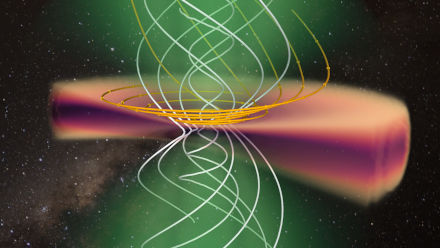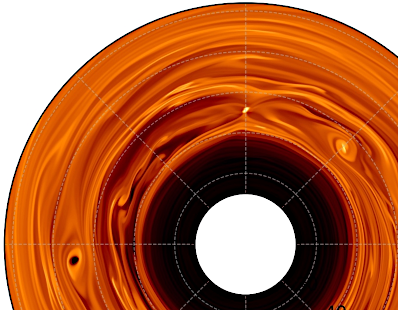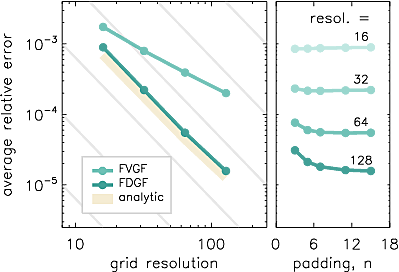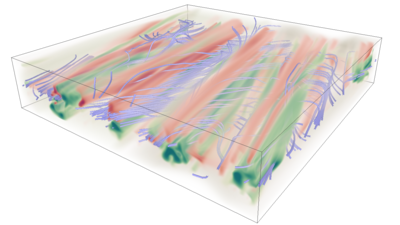Horizon Europe -
ERC Consolidator Grant
"Early phases of planetary birth sites:
environmental context and
interstellar inheritance"
The aim of this ambitious research project is to produce the most realistic computer simulations of the assembly of gaseous protoplanetary accretion discs, and to under- stand which of their traits are inherited from and / or affected by their direct interstellar context.
 |
Project overview

Planet formation is not only ubiquitous, but figuratively speaking happens within the blink of an eye. Surveys such as D-SHARP (using the ALMA telescope array) show growing evidence for feature-rich young disks. This implies that we should shift our focus towards early stages of circum-stellar discs, that is, systems at the point of transition from Class I to Class II, which moreover mandates to abandon the assumption of the disk as a quiescent entity detached from its surroundings.
At the earliest stages, we hence should include the wider context of the systems, such as for instance their protostellar envelopes. Moreover, environmental context becomes key. Actively star-forming stellar associations can disrupt and affect the very processes were are interested in.
The bottom line is that we need to significant expand our previous models in terms of physical realism. Most prominently, we now include the gas self-gravity, and study how this alters the role played by magnetic fields.
Highlight: Exact self-gravity kernel for 2D
Direct gravitational instability is one of the two central theories trying to explain the formation of gas giant planets. Provided that cooling is sufficiently fast, it describes how an initially massive gaseous disk can fragment into clumps. A fundamental challenge of the theory is that the resulting clumps tend to be too massive — that is, more akin to a Brown dwarf than a Jupiter-mass planet.
Simplified “2D flat” simulations of protoplanetary disks that incorporate self-gravity must introduce a softening prescription of the gravitational potential to account for the vertical distribution of the gas. Our previous work showed that this prescription underestimates the short- and intermediate-range interaction of self-gravitating gas by up to 100% — thereby inhibiting gravitational collapse and specifically fragmentation. Consequently, the initial mass of objects formed through this channel could be overestimated, since the gravitational potential behaves as if it were shielded.

Gravitational collapse inside a vortex: The figure illustrates the dust accumulation in a two-dimensional simulation of a gravitationally unstable gas vortex. Using the novel kernel, gravitational collapse of dust, followed by a gas envelope capture, inside a vortex becomes possible.
In our research, we focus on an analytical model for computing faithfully and accurately (i.e., up to 0.3%) self-gravity in 2D simulations. Employing a direct vertical integration of the 3D forces permits to compute a 2D kernel that goes beyond the oversimplified “Plummer” potential and, moreover, is adaptive to local conditions.
related publications
- “Self-gravity in thin-disc simulations of protoplanetary discs: The smoothing length rectified and generalised to bi-fluids”
Rendon Restrepo, S., Barge, P. (2023), A&A 675, A96
Highlight: Gravitation à la Münchhausen
Astronomers have obtained the first extensive census of protoplanetary-disc (PPD) populations showing sub-structure. Features such as annular rings and gaps hint at the presence of massive planets. The estimated stellar ages of these so-called "T Tauri" systems suggest that planets appear relatively quickly after the star is born.
Because PPDs are initially quite massive in comparison to their host star, their own weight can lead to gravitational instability (GI) and subsequent fragmentation. The interaction of GI with magnetic fields is still poorly understood. To study these topics, we extend the MHD Group's NIRVANA code to the realm of self-gravity — specifically for the case of spherical-polar meshes. The latter are mandatory to properly keep track of the disc angular moment content, which in turn critically determines PPD evolution.

Numerical convergence study using James' method with two different discrete Green's functions. The analytical kernel (FVGF, based on a finite-volume, i.e., "Lego-brick" solution) is insufficient and needs to be replaced by a finite-difference kernel (FDGF) which is obtained computationally. We find that a "padding" of about ten cells around the center of the kernel is sufficient for good convergence.
A substantial obstacle is posed by the fact that solving Poisson's equation requires prior knowledge of the gravitational potential on the domain boundary. Similar to Baron Münchhausen, who pulls himself out of the swamp by his own hair, we use James' trick, employing a surface correction density. Translating this "charge" into the surface gravitational potential is done via a discrete Green's function convolution (see figure). Care has to be taken to obtain proper convergence with numerical resolution.
related publications
- “Toward an efficient second-order method for computing the surface gravitational potential on spherical-polar meshes”
Gressel, O. & Ziegler, U. (2024), AN 345, e20240056
Highlight: A gravitoturbulent dynamo
Sufficiently ionized regions of protoplanetary accretion discs can sustain magnetic fields against Ohmic decay. For sufficiently coherent fields, magnetorotational instability (MRI) can ensue and drive turbulence — which itself leads to accretion of mass onto the central star.
Seed fields for the MRI may originate during a previous epoch via a kinematic mean-field dynamo. We test this hypothesis using shearing-box simulations of a gravitoturbulent state, where we employ the test-field method for detecting an α-effect dynamo. Our results show that in the presence of a stratified gas disc, the combined effect of differential rotation and overturning motions naturally creates an αΩ dynamo.

Gravitoturbulence describes a chaotic flow where the turbulence driven by self-gravity creates a self-sustained quasi-stationary state. This usually happens when cooling is insufficient to lead to the fragmentation of clumps into bound objects, and highlights the dispersive character of chaotic motions. In the figure, we can see dipolar magnetic tubes forming (red/green) along with overturning rolls of gas motion (purple).
Similar to previous results by Löhnert & Peeters (2022), we find that the gravitoturbulent dynamo can boot-strap the MRI, which co-exists with the former in a mutually affecting way. This combined state of GI-MRI will be subject to follow-up investigations.
related publications
- (in preparation)
 |
This work was co-funded by the European Union |
Views and opinions expressed are however those of the author(s) only and do not necessarily reflect those of the European Union or the European Research Council. Neither the European Union nor the granting authority can be held responsible for them.

